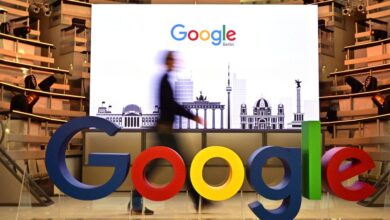Google vs. OpenAI: Who’s Leading The Generative AI Race?

OpenAI and Google are fiercely competing in the generative AI field. OpenAI recently showcased updates to ChatGPT, notably the GPT-4o, which now includes multimodal capabilities. This upgrade allows ChatGPT to detect emotions, analyse facial expressions, and adjust its tone to match user preferences. This makes it feel more human-like.
Meanwhile, Google, at its annual I/O conference, focused on AI-powered search enhancements. Their AI Overview feature offers concise answers with source links, and the multistep reasoning tool refines search results efficiently. These updates enhance Google’s core search functionality, ensuring it remains integral to users’ daily routines. This competitive push highlights the rapid advancements in AI technology.
Why does it seem like these two tech giants are neck-on-neck? Let’s take a closer look at the reasons behind their seemingly parallel advancements.
Why Does Google And OpenAI Seem So Competitive?
Tech giants Google and OpenAI are at the forefront of AI research, developing increasingly sophisticated language models and algorithms. With both companies making impressive advancements, it’s natural to wonder if they are in direct competition.
While there’s a drive to lead in AI, the playground isn’t entirely adversarial. Both Google and OpenAI contribute to open-source projects and share research findings, advancing AI collectively. However, their approaches differ. Google, with its ample resources, may prioritise integrating AI into existing products like search and advertising. OpenAI, meanwhile, might focus more on the ethical implications and societal impacts of advanced AI. This competition could ultimately accelerate the development of AI beneficial for everyone.
Google vs. OpenAI
Google and OpenAI, both leaders in artificial intelligence, are pursuing distinct yet overlapping goals. Here’s a look at their approaches and recent breakthroughs.
Google AI: Enhancing Everyday Experiences
Google’s AI strategy focuses on integrating AI into everyday products to make them more helpful and intuitive. Their recent advancements reflect this philosophy. For instance, the new Gemini 1.5 Flash, a lightweight and efficient AI model, excels at summarising conversations, captioning videos, and extracting data from documents, all aimed at enhancing user interactions with Google products.
This practical approach extends to Google Pixel phones, with features like Audio Magic Eraser, which removes background noise from videos, and Face Unblur, which sharpens blurry photos, demonstrating Google AI’s mission to improving user experience through practical AI solutions.
Here is a list of the AI models developed by Google:
- Gemini 1.0 Ultra: Google’s largest model designed for highly complex tasks, boasting performance excellence and advanced reasoning capabilities.
- Gemini 1.5 Pro: The best model for general performance across a wide range of tasks, offering complex reasoning across modalities and problem-solving with longer blocks of code.
- Gemini 1.0 Pro: Top model for scaling across various tasks, featuring complex reasoning systems and advanced audio understanding.
- Gemini 1.0 Nano: Most efficient model for on-device tasks, providing reasoning, functionality, and language understanding with broad accessibility.
- Gemini 1.5 Flash: Lightweight model optimised for speed and efficiency, offering quality at a lower cost and understanding of long-context inputs.
- PaLM 2: A state-of-the-art language model with improved multilingual, reasoning, and coding capabilities, suitable for various language-related tasks.
- Imagen: A family of text-to-image models by Google, providing high-quality images with text rendering support and prompt understanding.
- Codey: Description: A family of models generating code based on natural language descriptions, useful for creating functions, web pages, and other types of code.
More from Artificial Intelligence
OpenAI: Pushing AI’s Boundaries
OpenAI takes a more exploratory approach, focusing on advancing AI research and understanding its societal impact. Their recent project, GPT-4o, is a powerful language model capable of generating realistic and nuanced text, from poems to code, and is so advanced it can analyse facial expressions to accurately determine emotions.
This focus on core capabilities could lead to applications across various industries. OpenAI also prioritises responsible AI development, as outlined in their charter, ensuring that AI benefits society as a whole—a crucial consideration as AI evolves.
Here is a list of the AI models developed by Google:
- GPT-4o: OpenAI’s fastest and most affordable flagship model with multimodal capabilities, accepting text or image inputs and outputting text.
- GPT-4 Turbo and GPT-4: Large multimodal models capable of solving difficult problems with high accuracy, featuring broad general knowledge and advanced reasoning capabilities.
- GPT-3.5 Turbo: A fast, inexpensive model optimized for simple tasks, capable of understanding and generating natural language or code.
- DALL·E: AI system generating and editing images based on natural language prompts, available for creating new images or editing existing ones.
- TTS (Text-to-Speech): Converts text into natural-sounding spoken audio, available in two models: tts-1 for speed and tts-1-hd for quality.
- Whisper: General-purpose speech recognition model capable of multilingual speech recognition, translation, and language identification.
- Embeddings: Numerical representation of text useful for various tasks like search, clustering, and recommendations, available in different models based on output dimensions.
- Moderation: Fine-tuned model for detecting sensitive or unsafe content, providing classification capabilities across multiple categories.
Is It Competition Or… Collaboration?
While Google and OpenAI might seem to be in competition, it may not be that intense. Their research and advancements often complement each other. OpenAI’s foundational research supports the practical applications Google champions, while Google’s real-world testing provides valuable data for OpenAI’s research. This interplay between exploration and implementation benefits the entire field of AI, accelerating progress towards a future powered by intelligent machines.
The dynamic between Google and OpenAI showcases the diversity and rapid progress in the AI sector. While their approaches differ—Google focusing on practical integrations and OpenAI on ethical implications and research—their advancements often complement one another. This synergy not only drives innovation but also ensures that AI development is both practical and socially responsible, promising significant benefits for users and society alike.



